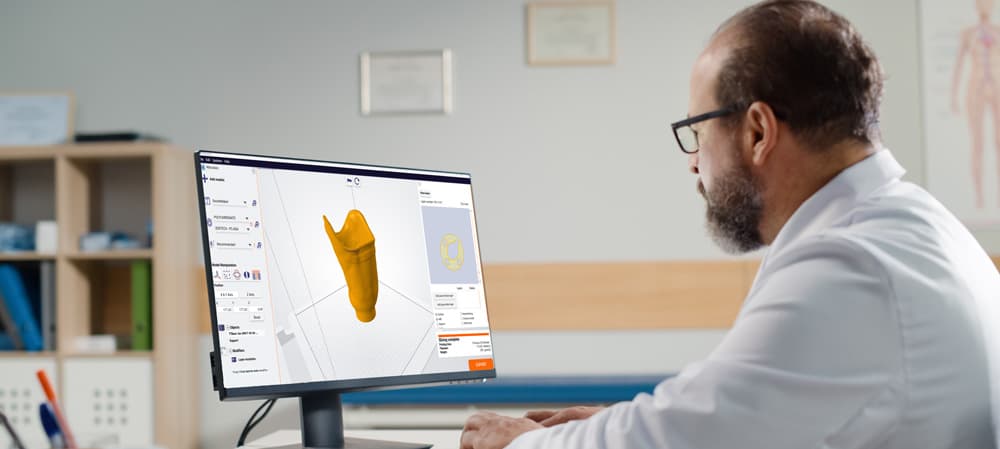FDM printing prosthetic sockets
In late 2023, we received uplifting news: our FDM (Fused Deposition Modeling) 3D-printed prosthetic socket successfully passed the ISO 10328 strength test for lower-limb prostheses. This article explores the significance of this achievement. While It has the potential to revolutionize global access to high-quality prosthetic products.
Approximately a year ago, Snapform and Create it REAL initiated a collaborative effort to explore the viability of using FDM 3D printing as a production method for prosthetic sockets. We aim to achieve the strength necessary to pass the stringent ISO test. Traditionally, FDM was considered insufficiently robust for prosthetic applications, with SLS (Selective Laser Sintering) being the favored 3D printing method.
Stronger prosthetic sockets with FDM 3D printing
Snapform, drawing from prior experiences, brought to light the common issue of traditional FDM prints lacking the required strength for prosthetics. Previous evaluations of sockets from various suppliers often failed. When most FDM prints break at approximately 30%-50% of the expected load-bearing capacity.
As a technology partner, Create it REAL is focused on fortifying printed products. At the same time addressing a longstanding vulnerability in the traditional layer-by-layer printing strategy. By meticulously focusing on the printing strategy and material, they achieved the strength to pass the ISO test.
Reduce cost and increase accessibility of sockets with FDM 3D printing
This achievement has a profound potential impact. The combination of Snapform’s Simfit program and Create It REAL’s printing technology presents a significant opportunity to reduce the cost of prosthetics substantially. This breakthrough opens doors for countless amputees worldwide who currently face barriers to accessing high-quality prosthetics.
FDM printing emerges as an ideal 3D printing solution due to its lower upfront costs for printers and materials. It operates in an office environment. Its simplicity and absence of stringent safety precautions make FDM an attractive option for widespread adoption. The potential for FDM 3D-printed prosthetics positions it as a viable candidate for decentralized scaling.
While acknowledging that this marks just the initial stride, it underscores the potential that Snapform and Create it REAL, working collaboratively, are not merely pushing the boundaries of 3D printing technology but also dismantling barriers to render prosthetics more accessible and affordable for those in need.
Partnerships matter
In summary, the successful ISO 10328 strength test for our FDM 3D-printed prosthetic socket represents a major milestone. The collaborative efforts of Snapform and Create it REAL have validated FDM’s viability for prosthetics and addressed historical strength challenges. This achievement has the potential to significantly reduce prosthetic costs globally. At the same time, it also makes high-quality solutions more accessible. Celebrating this success underscores the transformative impact of innovative collaboration in advancing technology and enhancing accessibility for individuals in need worldwide.



